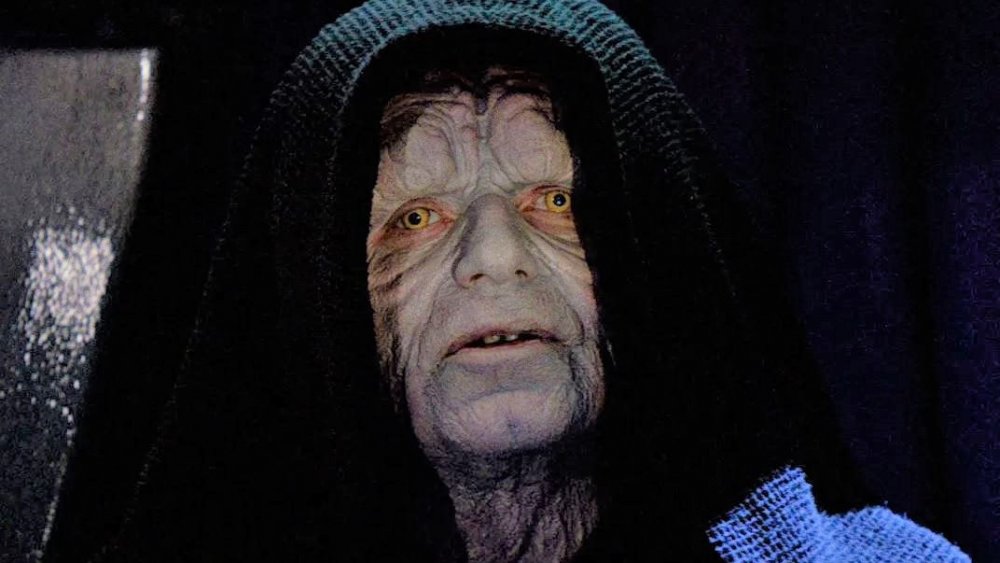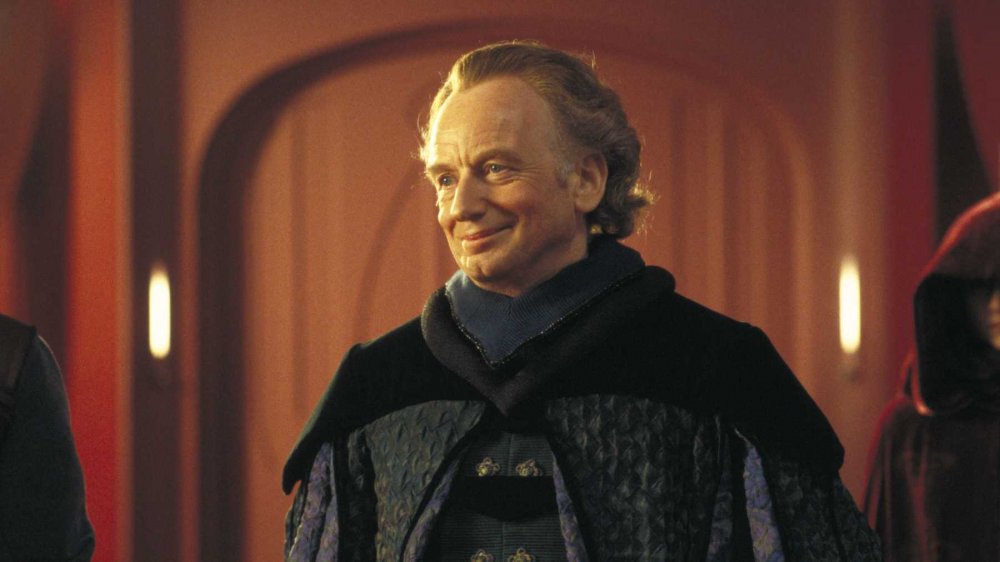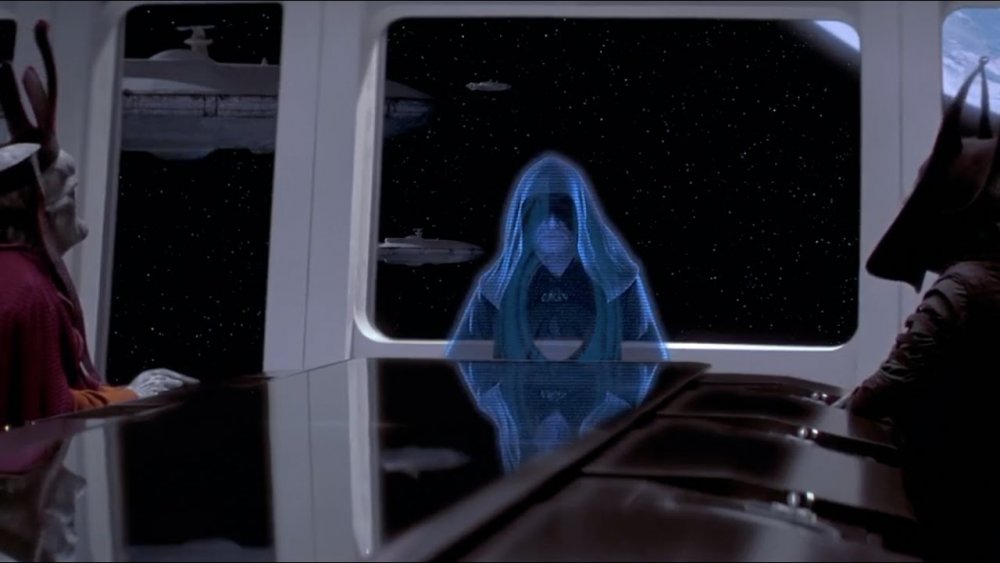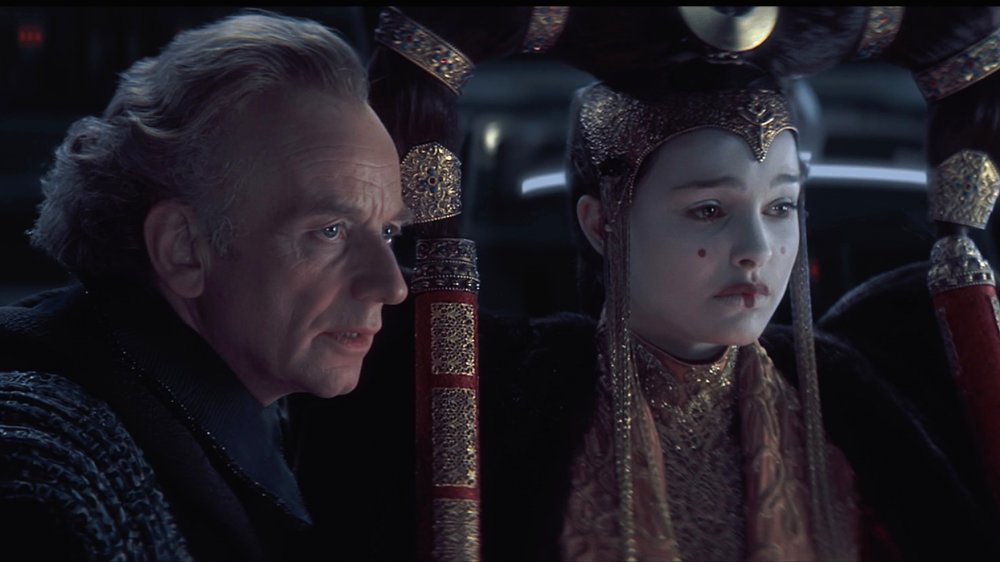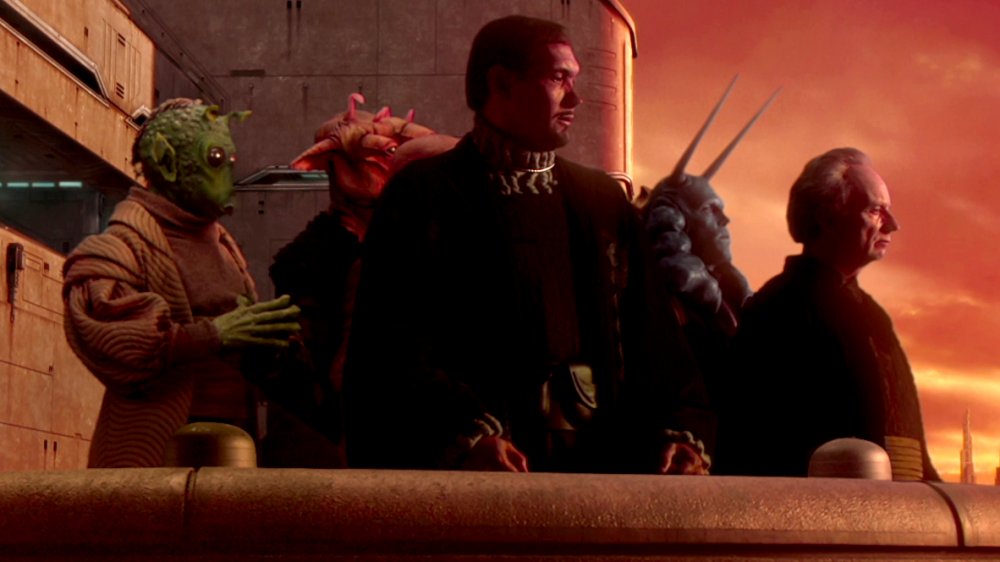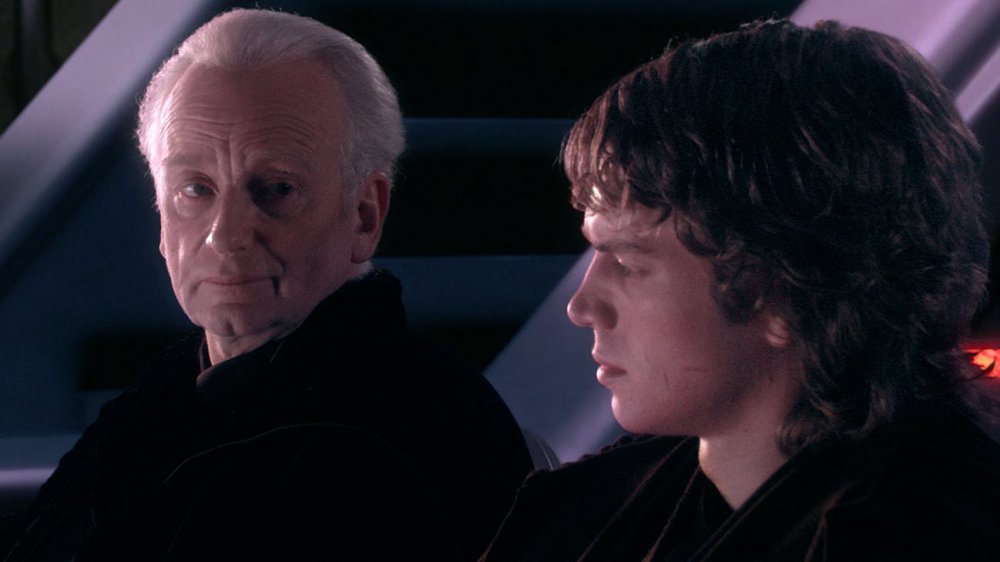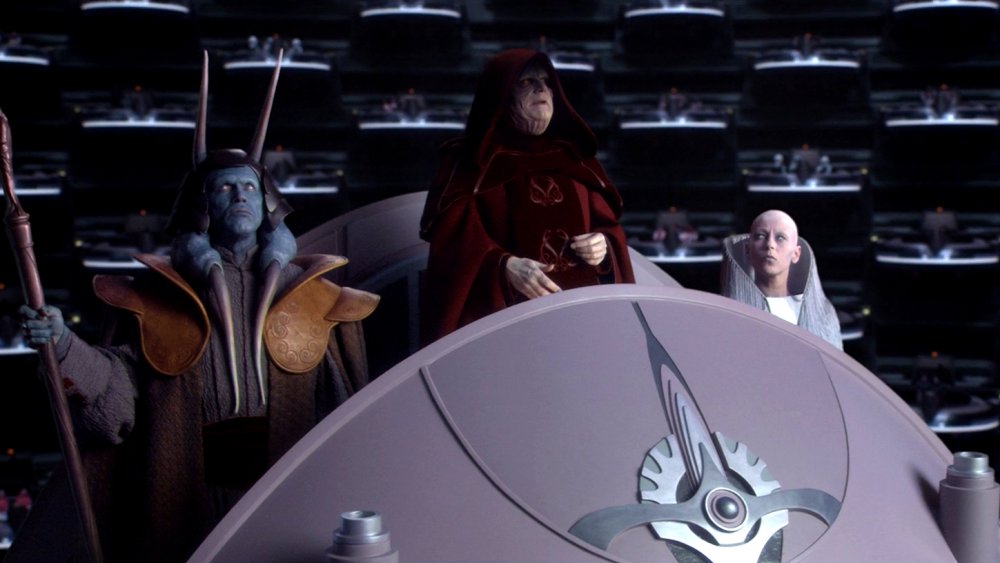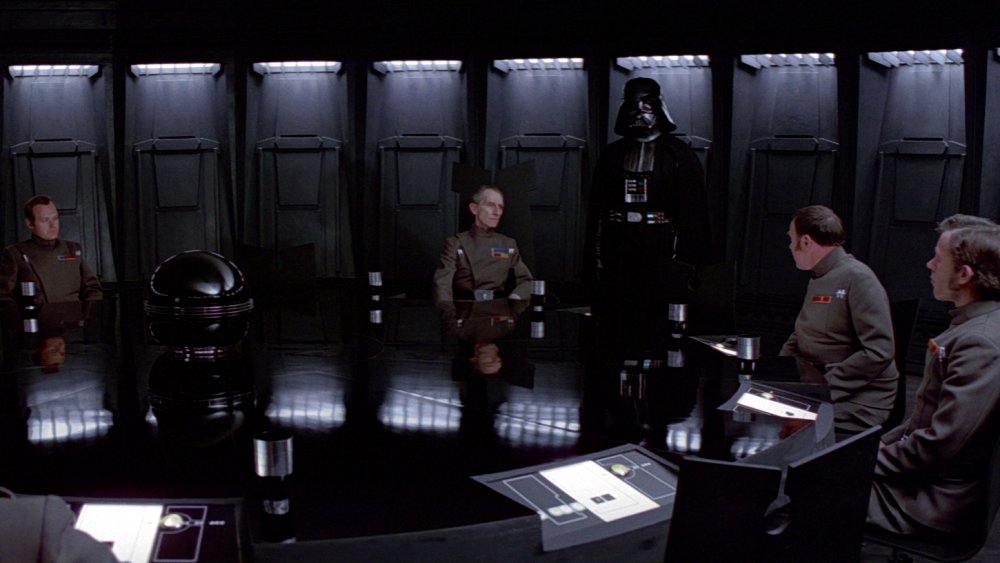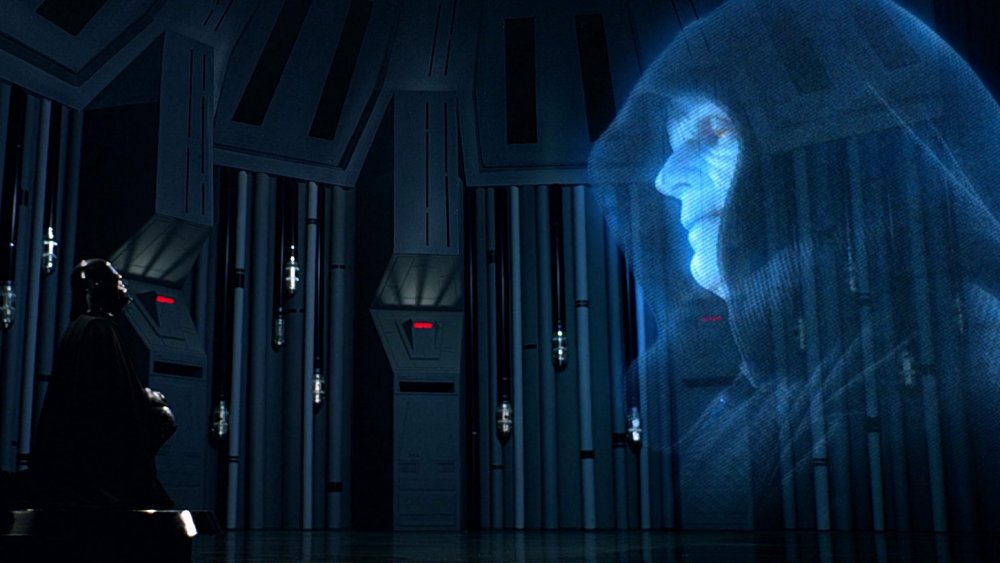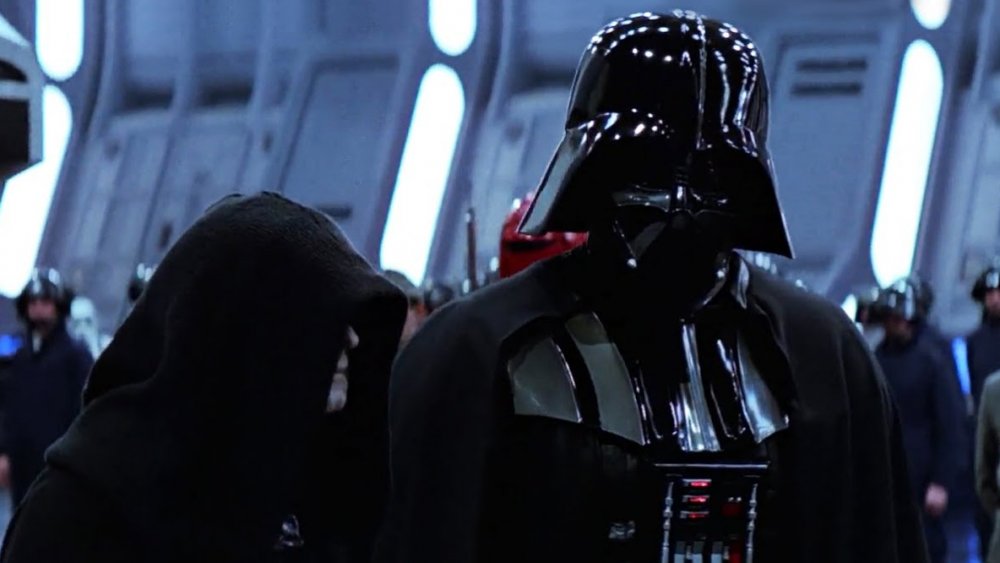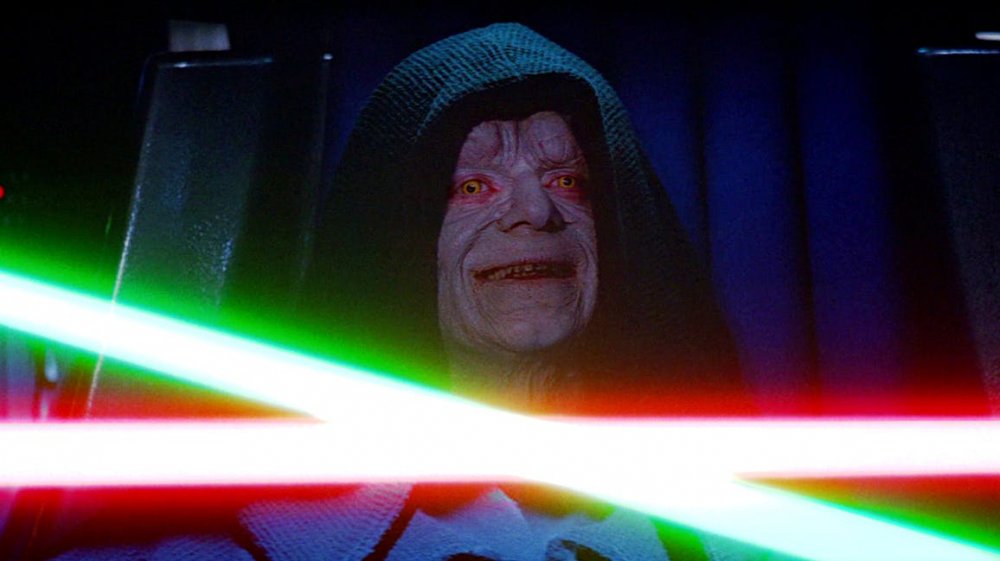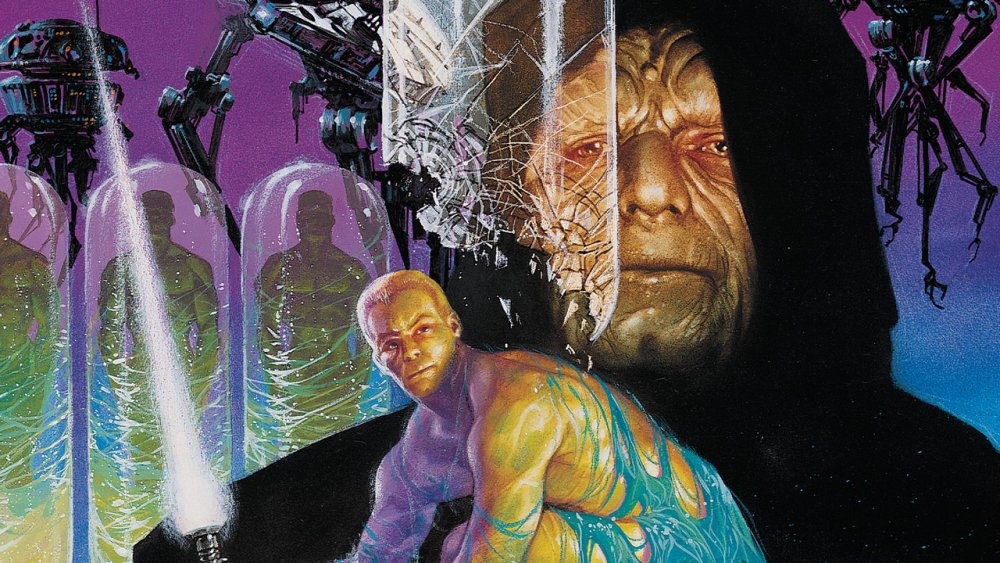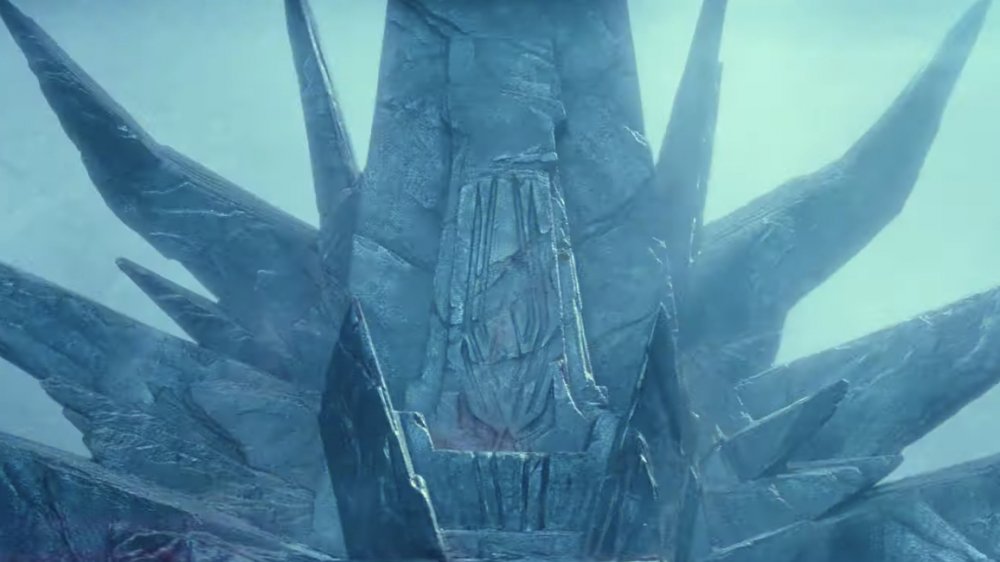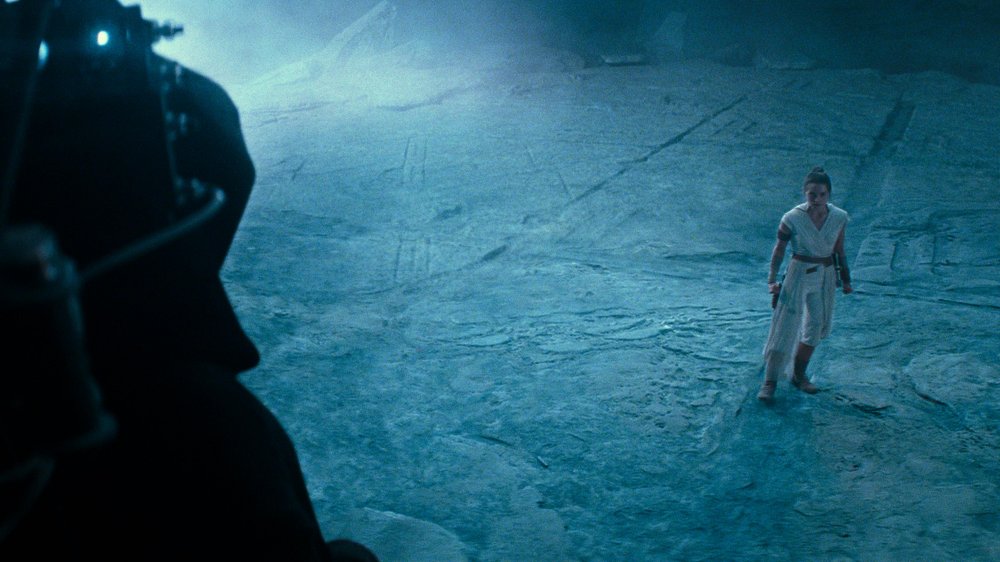The Entire Emperor Palpatine Story Explained
When the first Star Wars movie came out in 1977, Darth Vader was the main bad guy, and the Emperor was only an unseen figure in the background. By Return of the Jedi, however, Emperor Palpatine was prominently featured and revealed to be the true villain of the Star Wars universe. With the release of the prequel trilogy, which told the story of Vader's fall to the Dark Side of the Force, Palpatine became the primary antagonist of the saga. So it makes sense, then, for him to return for the final movie in the Skywalker series, The Rise of Skywalker.
The strange thing about that return, of course, is that Palpatine died in Return of the Jedi, more than three decades ago in both real-world time and Star Wars continuity. If we look back at his role throughout the saga, however, we'll see that he was always a figure of unstoppable ambition and limitless evil, so in a way, it makes sense that even death might not be able to permanently stop him from exerting his will over the Star Wars galaxy.
Palpatine's early years
Sheev Palpatine, the man who would become a Sith Lord and the galactic emperor, was born on the planet Naboo. According to the novel Darth Plagueis, young Palpatine first discovered the temptation of the Dark Side of the Force while collecting Sith artifacts. As a young man he met Plagueis, a Muun who was also known as Hego Damask, an interstellar businessman. The encounter led Palpatine to kill his entire family and dedicate himself to becoming Darth Plagueis' Sith apprentice. As a result, Plagueis gave him the name of Darth Sidious.
Like Plagueis before him, Sidious carefully maintained his non-Sith identity as Sheev Palpatine, and he became active in politics on Naboo. He eventually rose in rank to become a senator (after secretly arranging the assassination of his predecessor), representing Naboo in the Galactic Senate. He remained in that position for years, methodically working to accumulate more power, gaining strength both politically and in the Dark Side.
The Phantom Menace himself
While Palpatine gained popularity in the Senate, Darth Sidious formed alliances in the darker corners of the galaxy. Appearing as a mysterious cloaked figure who primarily communicated via hologram, he contacted and manipulated groups who were dissatisfied with the Republic, such as the Neimoidians and their Trade Federation. When it was finally time to make his bid to become chancellor of the Republic, he encouraged the Neimoidians to blockade Naboo, creating a crisis that would provide him with a political opportunity.
During this same period, Palpatine took custody of a young Zabrak and had him raised in the ways of the Dark Side. The Zabrak became Sidious' first Sith apprentice, Darth Maul. Since Sith tradition says that there are only ever two at a time, that meant Palpatine eventually had to murder Darth Plagueis, thus becoming the galaxy's senior Sith Lord. In this guise, he would continue to manipulate galactic conflicts, while as senator, he could use those conflicts for his own advancement.
Palpatine was a master manipulator
Since nobody knew that he was the one behind the Trade Federation's blockade of Naboo, Palpatine was able to exploit the incident to consolidate his political power. When Chancellor Valorum failed to take strong action to defend Naboo, Palpatine encouraged Naboo's Queen Amidala to call for a vote of no confidence in Valorum, which in turn led to a new election. Being the senator from the planet that was in crisis, Palpatine was perfectly positioned to win the election and become the new supreme chancellor of the Republic.
Taking the top office in the galaxy was a huge step in Palpatine's rise, but it would still take years of simultaneously consolidating his political power as chancellor while also exacerbating the galaxy's conflicts as Darth Sidious before he would be able to gain absolute power. He would also need a new Sith apprentice, as Darth Maul was defeated and seemingly killed by Jedi Obi-Wan Kenobi as the Naboo crisis was drawing to a close.
The clones attack
After the defeat of Darth Maul, Palpatine's new Sith apprentice was the elderly aristocrat Count Dooku, who acted as his proxy in leading a separatist movement of multiple systems that were dissatisfied with the Republic. When the Separatists were found to be building a vast droid army, Chancellor Palpatine was granted special powers to deal with the threat.
As it turns out, using other proxies, he'd already commissioned an army of clone troopers, and his new powers enabled him to command that army to go to war against the Separatists. Not only was Palpatine's power increased, but the Republic ended a long period of peace to become a dominant military power in the galaxy, a big step closer to becoming an empire. Outwardly, the chancellor pretended to be reluctant to take on the burden of greater power and lead the Republic into war, but of course, it was all part of the long game he'd been playing since the beginning.
Temptation of the Sith
Three years later, Chancellor Palpatine arranged his own capture by Count Dooku's Separatist forces. He was rescued, as he knew he would be, by Obi-Wan Kenobi and Anakin Skywalker. At Palpatine's urging, Anakin killed an already-defeated and literally disarmed Dooku. From then on, Palpatine began actively working to seduce Anakin to the Dark Side of the Force and make the powerful young Jedi into a new Sith apprentice. Anakin was concerned for the health of his pregnant wife, Padmé Amidala, and Palpatine planted the idea in Anakin's head that becoming powerful in the Dark Side was the key to ensuring that she survived the pregnancy.
Ultimately, of course, Palpatine didn't care about Padmé at all, and it was Anakin's turn to the Dark Side that led to her death. In his new Sith persona as Darth Vader, Anakin Skywalker would become the most powerful ally Palpatine had ever had and a key part of his plan to eliminate the Jedi and rule the galaxy as a tyrant.
The Emperor rises
When the Jedi finally realized that Palpatine was a Sith Lord, it was far too late. A vicious battle with Jedi Master Mace Windu brought about a fearsome change to Palpatine's physical appearance. While there has been much speculation, it's unclear whether Palpatine was disfigured by Force lightning, as he claimed, or whether he was revealing what had already been his true appearance. In any case, the evil within him came to the surface, and his face became grotesque and slightly inhuman.
Ironically, his disfigurement enabled him to turn the Senate against the Jedi who'd attacked him. He took the opportunity to seize the power he'd worked so long to bring within his grasp and declared himself emperor of the galaxy. Although the Galactic Senate would remain in place for years to come, the Republic had become the Empire, and with the Jedi eliminated by the clone troopers, there was nobody left to challenge Palpatine's power.
Keeping the local systems in line
Almost 20 years later, Emperor Palpatine dissolved the Galactic Senate permanently. He saw no further reason to maintain the illusion of representative democracy, because the completion of the Death Star enabled him to rule through fear. Commanded by one of the Emperor's most trusted and ruthless operatives, Grand Moff Tarkin, the Death Star was a mobile space station with the power to destroy entire planets. As a demonstration of its power, Tarkin obliterated the planet Alderaan, home to key members of the Rebel Alliance who were working against the Empire. Leia Organa, adopted princess of Alderaan, rebel leader, and secretly the daughter of Anakin Skywalker and Padmé Amidala, was forced to watch the destruction of her planet from the deck of the Death Star, where she was being held prisoner at the time.
As these events unfolded, Emperor Palpatine remained unseen in the background, while Tarkin and Darth Vader did his dirty work aboard the Death Star. This turned to be particularly fortunate for him because he was nowhere near the Death Star when Luke Skywalker, the other secret child of Anakin and Padmé, managed to blow it up on behalf of the Rebel Alliance. Darth Vader was able to escape the destruction, but Tarkin and the other military leaders on board all died.
The hunt for Skywalker
Following the destruction of the Death Star, Emperor Palpatine and Darth Vader both learned the identity of Luke Skywalker, and they became determined to find him. As Vader searched for Luke and the Rebels while aboard his Super Star Destoyer, Executor, Palpatine remained in the imperial capital of Coruscant and communicated with Vader via hologram.
Palpatine suspected that Vader wanted to turn his son to the Dark Side and overthrow Palpatine with his help. Killing your master after you've found your apprentice was Sith tradition, after all, and it was exactly what Palpatine had done to his own master, Darth Plagueis. For his part, Palpatine hoped that either Luke would kill his father and then replace him as the Emperor's apprentice, or that Luke would die, thus eliminating the threat and maintaining the status quo.
Eventually, Vader would confront Luke on Bespin, but he failed to convert, capture, or kill him. He did however reveal himself as Luke's father, ensuring that Luke would eventually seek out Vader by choice, which could only put him in the path of the Emperor.
The Emperor builds the second Death Star
With construction underway on the second Death Star, Emperor Palpatine decided to take a more active hand in the Galactic Civil War. Arriving on the new Death Star to oversee its completion himself, the Emperor carefully laid a trap for the Rebel Alliance. He knew they were planning to attack the Death Star before it was finished, so he made sure that when the Rebels arrived, the half-built space station's weapon systems would be full operational. This nearly enabled the Empire to wipe out the entire Rebel fleet with the Death Star's massive firepower.
What enabled the Rebels to ultimately win the day was the efforts of a Rebel team on the surface of the forest moon of Endor, where the new Death Star was in orbit during its construction. Led by Han Solo and Leia Organa, these Rebels were eventually able to shut down the shield generator that protected the incomplete Death Star, enabling Rebel ships to destroy it. Ironically, Darth Vader had allowed the ship holding the Rebel party to approach Endor, even though he sensed Luke Skywalker's presence among them. That was the first of Vader's betrayals at Endor that led to the Emperor's downfall, but it was far from the last.
The seduction of Luke Skywalker
As the Emperor had predicted, Luke Skywalker soon sought out Darth Vader on Endor. The young Jedi surrendered, and Vader brought him before Palpatine on the new Death Star. The Emperor could sense that the emotional Luke was veering closer to the Dark Side, and he and Vader encouraged Luke to give himself over to his emotional turmoil. Palpatine seemed ready to die if it would cement Luke's turn to the Dark Side, but he was even more enthusiastic about the possibility of Luke killing his father and taking Vader's place by the Emperor's side.
Ultimately Luke resisted the Dark Side, casting his weapon away. At that point, Palpatine revealed that, like the armed and operational Death Star, he wasn't as weak and helpless as he seemed. The Emperor blasted the young Skywalker with Force lightning from his fingertips, preparing to kill him even as the Death Star's weapons killed Luke's allies. At the last minute, however, Darth Vader was unable to stand by and watch as the man who'd corrupted him and ruined his life tried to murder his son as well, and Vader grabbed Palpatine and hurled him down a seemingly bottomless shaft within the Death Star, killing the Emperor.
Darth Vader died immediately afterwards, his cybernetic life force damaged irreparably by Palpatine's Force lightning. Luke managed to escape, just as his allies finally destroyed the second Death Star, which was a decisive victory against the Empire.
Palpatine in the Expanded Universe
Various tie-in media, with varying degrees of canonicity, established that Palpatine left many plans in motion when he was killed. In the old Expanded Universe (eliminated from official canon by Disney), he'd left a secret Force-sensitive agent in the field, Mara Jade, who would continue trying to carry out the last command the Emperor had given her: to kill Luke Skywalker (although she would ultimately become his ally and then his wife).
In the Dark Empire comics, Palpatine himself was resurrected in a young and muscular clone body, and he had a second chance to tempt Luke to the Dark Side. Ultimately, Princess Leia was able to save Luke, and Palpatine died once again. But more importantly, these stories "never happened" in the official continuity of the new Star Wars films.
In the current canon, all that was really established in the books and comics is that Palpatine sent his forces into the Unknown Regions of the galaxy, so that they would have space to rebuild after his "death," leading to the First Order. But how directly Palpatine was involved in that plan wouldn't be clear until the final film of the saga.
The rise of Emperor Palpatine?
It's debatable, in the end, whether Palpatine died on the Death Star or not, but if he did he managed to come back pretty quickly. He never exactly says how, but cloning seems to be involved. He hid for decades on the planet Exegol in the Unknown Regions. He created the figure of Snoke, the original Supreme Leader of the First Order, to be his puppet until it was time for the rebirth of the Empire as the Final Order. He existed in a withered and broken form on Exegol, with mangled hands, milky unseeing eyes, and machinery that helped him move around. Nevertheless, he built an entire Sith empire on that hidden planet, complete with a vast fleet of Star Destroyers that would be able to crush the Resistance and once again establish his dominance over the Galaxy.
When he eventually revealed himself, he recruited Supreme Leader Kylo Ren, who had already killed Snoke and taken over the First Order. Palpatine promised Ren even greater power if Ren would fulfill his wishes, and for a time Kylo seemed to agree.
Like Emperor, like granddaughter
Palpatine's greatest concern this time was his granddaughter, Rey of Jakku. He'd been searching for her since she was born, but she was a grown woman before she learned about her connection to him and journeyed to Exegol to destroy her grandfather and end his threat to the galaxy. Then she learned that his death at her hands was part of Palpatine's plan. If she killed him in anger, she would turn to the dark side, take the spirits of him and the other Sith within her, and become the new Empress.
When Kylo Ren, having turned away from the dark side, arrived to help Rey, Palpatine drew on both of their life forces to restore himself, regaining mobility and his trademark yellow eyes. He used his vast power to shoot the Resistance fleet out of the sky with force lightning, until a weakened Rey managed to confront him once again, using Luke Skywalker and Leia Organa's lightsabers to redirect the lighting, basically making Palpatine kill himself. His granddaughter nearly died from the effort, but Kylo sacrificed his own life to heal her with the Force.
As for Emperor Palpatine, is he dead for real now? The Skywalker saga's supposed to be over, so it's nice to believe he is. But he might have just retreated to another planet and another body, waiting for a future decade to try it all again. His ambition, after all, is stronger than death.
